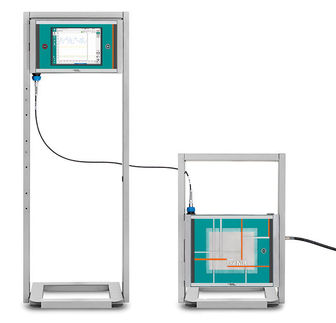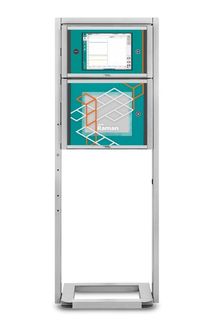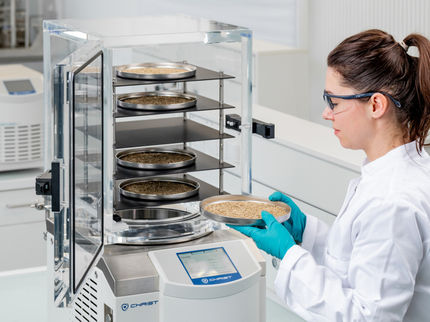Orthostatic hypotension
Classification & external resources
| ICD-10
| I95.1
|
| ICD-9
| 458.0
|
| DiseasesDB
| 10470
|
| eMedicine
| ped/2860
|
| MeSH
| D007024
|
Orthostatic hypotension (also known as postural hypotension, orthostatic reflect, orthostatic intolerance and, colloquially, as head rush or a dizzy spell) is a sudden fall in blood pressure, typically greater than 20/10 mm Hg, that occurs when a person assumes a standing position, usually after a prolonged period of rest.
Symptoms
Symptoms, which generally occur after sudden standing, include dizziness, lightheadedness, headache, blurred or dimmed vision (possibly to the point of momentary blindness), generalized (or extremity) numbness/tingling and fainting. They are consequences of insufficient blood pressure and cerebral perfusion (blood supply).
Causes
Orthostatic hypotension is primarily caused by gravity-induced blood pooling in the lower extremities, which in turn compromises venous return, resulting in decreased cardiac output and subsequently lowering of arterial pressure. For example, if a person changes from a lying position to standing, he or she will lose about 700 ml of blood from the thorax. It can also be noted that although there is a decreased systolic (contracting) blood pressure, there is actually an increased diastolic (resting) blood pressure. However, the overall effect is an insufficient blood perfusion in the upper part of the body.
Still, the blood pressure does not normally fall very much, because it immediately triggers a vasoconstriction, pressing the blood up into the body again. Therefore, a secondary factor is required that, in turn, cause a fall in blood pressure greater than normal. Such factors include hypovolemia, diseases, medications, or, very rarely, safety harnesses.[1]
Hypovolemia
Orthostatic hypotension may be caused by hypovolemia (a decreased amount of blood in the body), resulting from bleeding, the excessive use of diuretics, vasodilators, or other types of drugs, dehydration, or prolonged bed rest. It also occurs in people with anemia.
Diseases
The disorder may be associated with Addison's disease, atherosclerosis (build-up of fatty deposits in the arteries), diabetes, pheochromocytoma, and certain neurological disorders including Shy-Drager syndrome and other forms of dysautonomia. It is also associated with Ehlers-Danlos Syndrome.
It is also present in many patients with Parkinson's Disease resulting from sympathetic denervation of the heart or as a side effect of dopaminomimetic therapy. This rarely leads to syncope unless the patient has developed true autonomic failure or has an unrelated cardiac problem.
Medication
Orthostatic hypotension can be a side effect of certain anti-depressants, such as tricyclics[2] or MAOIs.[3] It is also a side effect of the short-term use of marijuana.[4]
Harnesses
The use of a safety harness can also contribute to orthostatic hypotension in the event of a fall. While a harness may safely rescue its user from a fall, the leg loops of a standard safety or climbing harness further restrict return blood flow from the legs to the heart, contributing to the decrease in blood pressure.
Other risk factors
Patients who are prone to orthostatic hypotension are the elderly, postpartum mothers, those who have been on bedrest and teenagers because of their large amounts of growth in a short period of time. People suffering from anorexia nervosa and bulimia nervosa often suffer from orthostatic hypotension and is a common side effect of these mental illnesses.
Also, ETOH's from the dehydration effect.
Treatment and management
There are medications to treat hypotension. In addition, there are many lifestyle advices. Many of them, however, are specific for a certain cause of orthostatic hypotension.
Medical management
Some drugs that are used in the treatment of orthostatic hypotension include fludrocortisone (Florinef), erythropoietin and midodrine.
Pyridostigmine bromide (Mestinon) is now also used to treat orthostatic hypotension.[5]
Lifestyle advice
|
|
This section does not cite any references or sources.
Please improve this section by adding citations to reliable sources. Unverifiable material may be challenged and removed.
(October 2007) |
Some suggestions for minimizing the effects include:
- Standing slowly rather than quickly, as the delay can give the blood vessels more time to constrict properly. This can help avoid incidents of syncope (fainting).
- Take a deep breath and flex your abdominal muscles while rising to maintain blood and oxygen in the brain. This, however, may be contraindicated in individuals with Stage 2 hypertension. Usually medical personnel have their patients "dangle" before rising from bed to decrease the likelihood of dizziness/falling due to orthostatic hypotension. The dangling is done by having the patient sit on the side of their bed for about a minute so they do not have the sudden dizziness.
- Maintaining an elevated salt intake, through sodium supplements or electrolyte-enriched drinks. A suggested value is 10 g per day; overuse can lead to hypertension and should be avoided.
- Maintaining a proper fluid intake to prevent the effects of dehydration.
- As eating lowers blood pressure, eat multiple smaller meals rather than fewer larger meals. Take extra care when standing after eating.
- When orthostatic hypotension is caused by hypovolemia due to medications, the disorder may be reversed by adjusting the dosage or by discontinuing the medication.
- When the condition is caused by prolonged bed rest, improvement may occur by sitting up with increasing frequency each day. In some cases, physical counterpressure such as elastic
hose or whole-body inflatable suits may be required.
Prognosis
The prognosis for individuals with orthostatic hypotension depends on the underlying cause of the condition.
References
- ^ Suspension trauma. Lee C, Porter KM.
- ^ Jiang W, Davidson JR. (2005). "Antidepressant therapy in patients with ischemic heart disease.". Am Heart J 150 (5): 871-81. PMID 16290952.
- ^ Delini-Stula A, Baier D, Kohnen R, Laux G, Philipp M, Scholz HJ. (1999). "Undesirable blood pressure changes under naturalistic treatment with moclobemide, a reversible MAO-A inhibitor--results of the drug utilization observation studies.". Pharmacopsychiatry 32 (2): 61-7. PMID 10333164.
- ^ Jones RT. (2002). "Cardiovascular system effects of marijuana.". J Clin Pharmacol 42 (11 Suppl): 58S-63S. PMID 12412837.
- ^ Singer W, Opfer-Gehrking TL, McPhee BR, Hilz MJ, Bharucha AE, Low PA. (2003). "Acetylcholinesterase inhibition: a novel approach in the treatment of neurogenic orthostatic hypotension.". J Neurol Neurosurg Psychiatry 74 (9): 1294-8. PMID 12933939.
| Circulatory system pathology (I, 390-459) |
|---|
| Hypertension | Hypertensive heart disease - Hypertensive nephropathy - Secondary hypertension (Renovascular hypertension) |
|---|
| Ischaemic heart disease | Angina pectoris (Prinzmetal's angina) - Myocardial infarction - Dressler's syndrome |
|---|
| Pulmonary circulation | Pulmonary embolism - Cor pulmonale |
|---|
| Pericardium | Pericarditis - Pericardial effusion - Cardiac tamponade |
|---|
| Endocardium/heart valves | Endocarditis - mitral valves (regurgitation, prolapse, stenosis) - aortic valves (stenosis, insufficiency) - pulmonary valves (stenosis, insufficiency) - tricuspid valves (stenosis, insufficiency) |
|---|
| Myocardium | Myocarditis - Cardiomyopathy (Dilated cardiomyopathy, Hypertrophic cardiomyopathy, Loeffler endocarditis, Restrictive cardiomyopathy) - Arrhythmogenic right ventricular dysplasia |
|---|
Electrical conduction system
of the heart | Heart block: AV block (First degree, Second degree, Third degree) - Bundle branch block (Left, Right) - Bifascicular block - Trifascicular block
Pre-excitation syndrome (Wolff-Parkinson-White, Lown-Ganong-Levine) - Long QT syndrome - Adams-Stokes syndrome - Cardiac arrest - Sudden cardiac death
Arrhythmia: Paroxysmal tachycardia (Supraventricular, AV nodal reentrant, Ventricular) - Atrial flutter - Atrial fibrillation - Ventricular fibrillation - Premature contraction (Atrial, Ventricular) - Ectopic pacemaker - Sick sinus syndrome |
|---|
| Other heart conditions | Heart failure - Cardiovascular disease - Cardiomegaly - Ventricular hypertrophy (Left, Right) |
|---|
| Cerebrovascular diseases | Intracranial hemorrhage/cerebral hemorrhage: Extra-axial hemorrhage (Epidural hemorrhage, Subdural hemorrhage, Subarachnoid hemorrhage)
Intra-axial hematoma (Intraventricular hemorrhages, Intraparenchymal hemorrhage) - Anterior spinal artery syndrome - Binswanger's disease - Moyamoya disease |
|---|
Arteries, arterioles
and capillaries | Atherosclerosis (Renal artery stenosis) - Aortic dissection/Aortic aneurysm (Abdominal aortic aneurysm) - Aneurysm - Raynaud's phenomenon/Raynaud's disease - Buerger's disease - Vasculitis/Arteritis (Aortitis) - Intermittent claudication - Arteriovenous fistula - Hereditary hemorrhagic telangiectasia - Spider angioma |
|---|
Veins, lymphatic vessels
and lymph nodes | Thrombosis/Phlebitis/Thrombophlebitis (Deep vein thrombosis, May-Thurner syndrome, Portal vein thrombosis, Venous thrombosis, Budd-Chiari syndrome, Renal vein thrombosis, Paget-Schroetter disease) - Varicose veins / Portacaval anastomosis (Hemorrhoid, Esophageal varices, Varicocele, Gastric varices, Caput medusae) - Superior vena cava syndrome - Lymph (Lymphadenitis, Lymphedema, Lymphangitis) |
|---|
| Other | Hypotension (Orthostatic hypotension) |
|---|
| See also congenital (Q20-Q28, 745-747) |
|







